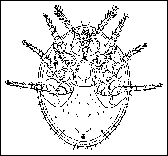

 |
||||||||||||
 |
||||||||||||
| Earthworm Biology and Production | ||||||
| Page 7 of 9 | Pages: 1 . 2 . 3 . 4 . 5 . 6 . 7 . 8 . 9 | |||||
Selling the Worms If one can start a business as a contract grower for an established wholesaler, he will already have a steady market for bait-size worms. To make higher profits, however, many new growers decide to go into the business either as independent wholesalers or retailers. In either case, there are several options available for sale of earthworms. If one lives in an area near or on the way to freshwater fishing resorts, he may sell his worms to fishermen passing by his home. (Check with the local zoning authority to be sure such a business is permitted in the area.) Sales may also be made to locally-owned sporting goods or fishing tackle stores, although most of the larger stores of this type rely on established wholesalers for their bait supplies. One may also sell earthworms by mail by placing a classified advertisement in one or more of the national magazines directed to fishermen and to organic home gardeners. Pet shops selling certain kinds of birds or fish may buy worms as food for their inventory. High school and college biology classes use worms for dissecting. Such markets are limited, however, and are not adequate to handle large volume sales. Earthworm Pests and Diseases Earthworms are subject to attack by a variety of pests. However, information on the full significance of the relationship between earthworms and their predators and parasites is scarce. Earthworm enemies are: ants, springtails, centipedes, slugs, mites, certain beetle larvae, birds, rats, snakes, moles, mice, gophers, toads, and other insects or animals which feed on worms or molest them. The earthworm also has quite a number of internal parasites including numerous protozoa, some nematodes, and the larvae of certain flies. Larger predators can be excluded from worm beds by proper construction of the bins, and by use of screens or gratings at the bottom and top of beds. The arthropods (mites, springtails, and ants) are probably of greatest concern to the earthworm grower. Mites "Red mites" or "fishworm mites" (Figure 2) frequently become a limiting factor in worm production. They are natural inhabitants of manures and similar organic materials, and all worm beds contain low-level populations of mites which under certain conditions reach extremely high levels. Several species of mites are present in most worm beds, but the most important is the earthworm mite, Uropoda agitans (also called Fuscuropoda agitans). These brown-to-reddish mites are small, although readily visible without magnification. They are found most abundantly near the surface and edges of worm beds and around feed concentrations. They do not normally attack earthworms, but they do consume worm feed. When mite populations are high, worms will stay deep in the beds and refuse to come to the surface to feed; this results in poor worm-growth and reproduction. 
Figure 2: The earthworm mite, Uropoda agitans. Also called Fuscuropoda agitans. Ventral view of female (Courtesy of Edward Baker). more... |
 |
|||||
| About Us :: Message Board :: Chat | |||||
| Library :: Photo Gallery :: Links & Resources :: Breeders & Sponsors :: Merchandise | |||||
| Website designed by: EthanCote.com | © 2001-2004, SimplyDiscus.com. All Rights Reserved. | ||||